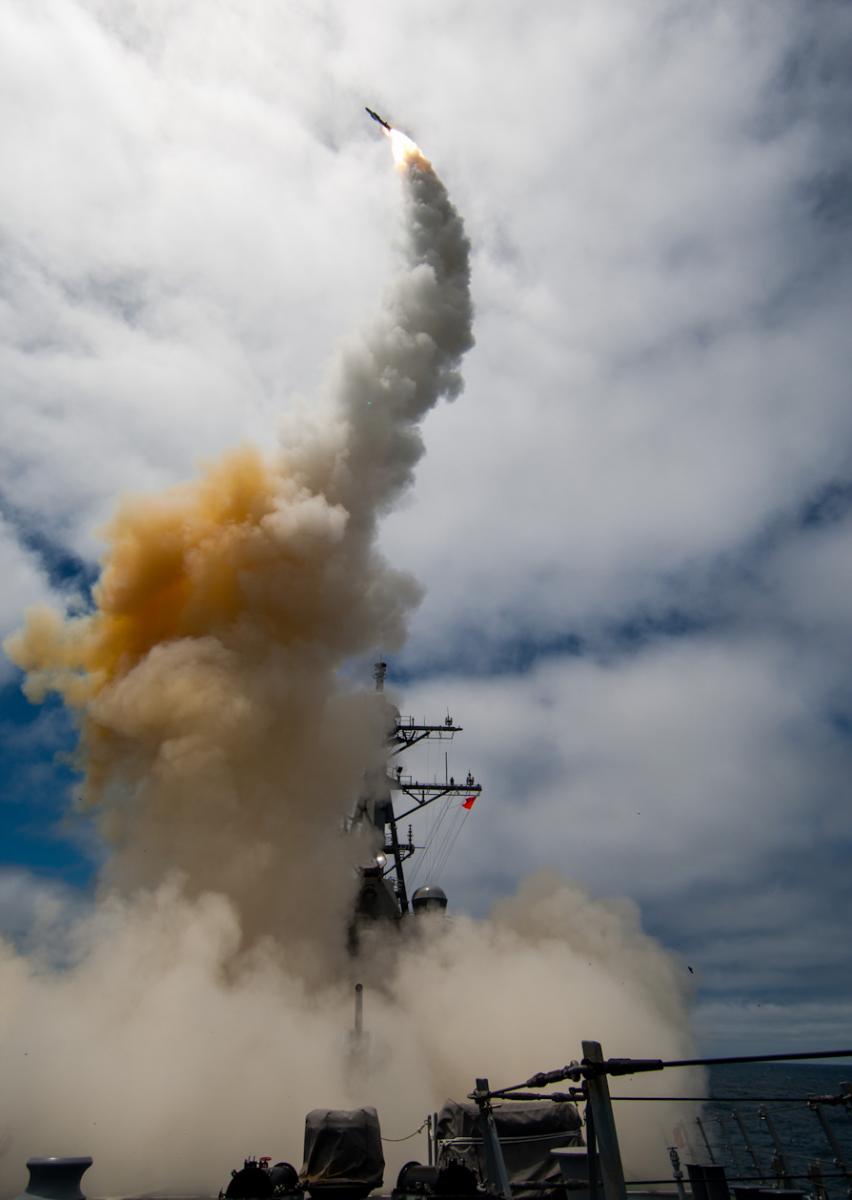The missile program US RIM-174 SM-6 ERAM (Extended Range Active Missile), developed by Raytheon, has achieved full operational capability in the 2013.
The weapon system features a 533 mm diameter booster with 4 Mk-72 nozzles allowing a 240 km range and Mach 3,5 cruising speed.
Designed to equip the latest US Naval Classes with the aim of providing protection against airborne (even low) and missile attacks; yet its main mission is the exoatmosphere interception of medium and long-range ballistic (TBMD) ballistic missiles at the terminal stage. To carry out this task is equipped with a sensor of the type Imaging Infrared (IIR), mounted side-by-side, allowing discovery and tracking of ballistic devices as well as a driving system that leads to direct impact on the target.
In the front section of the missile is the special LEAP vehicle Kinetic Warhead (KW), designed for direct impact with the target outside the Earth's atmosphere.
In addition, the SM-6 can also perform an anti-ship function. The tests have shown that the missile is able to hit naval units - beyond the line of the horizon - at a distance of about 300 km (the missile used by Navy for such purposes,Harpoon, it has a range smaller than the 130 km).
The two-stage missile is equipped with an active and semi-active positioning system and is launched from the Vertical Launch System (VLS).
With regard to ballistic missiles, the RIM-174 is able to discriminate the targets with a dual mode search device: with semi-active search based on an illuminator positioned on the launcher to highlight the target and active research, characterized by the emission of electromagnetic waves by the missile itself.

(photo: US Navy)












